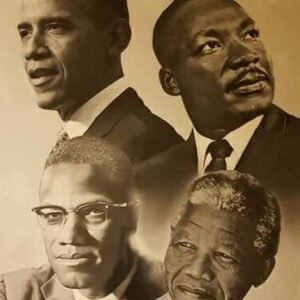Jim Crow laws…Georgia

Jim Crow laws
Jim Crow laws were state and local laws enacted in the Southern and border states of the United States and in force between 1876 and 1964 that required racial segregation, especially of African-Americans, in all public facilities. “Jim Crow period” or the “Jim Crow era” refers to the time during which this practice occurred. The most important laws required that public schools be segregated by race, and that most public places (including trains and buses) have separate facilities for whites and blacks. School segregation was declared unconstitutional by the Supreme Court in 1954 in Brown v. Board of Education. All the other Jim Crow laws were repealed by the Civil Rights Act of 1964.During the Reconstruction period 1865-1876, federal law provided civil rights protection in the South for Freedmen–the African-Americans who had formerly been slaves. Reconstruction ended at different dates (the latest 1877), and was followed in each Southern state by Redeemer governments that passed the Jim Crow laws to separate the races. In the Progressive Era the restrictions were formalized, and segregation was extended to the federal government by President Woodrow Wilson in 1913.After 1945, the Civil Rights movement gained momentum and used federal courts to attack Jim Crow. The Supreme Court declared de jure public school segregation unconstitutional in 1954. Legal school segregation was known as de jure segregation; it ended in practice in the 1970s. The Court ruling did not stop de facto or informal school segregation, which continues in large cities. President Lyndon B. Johnson, building a coalition of northern Democrats and Republicans, pushed Congress to pass the Civil Rights Act of 1964 which immediately outlawed all Jim Crow laws. Restaurants, hotels and theatres (with rare exceptions) immediately dropped racial segregation.
Origins of the Jim Crow laws
In the first stage of Presidential Reconstruction, all-white Southern legislatures, overwhelmingly dominated by ex-Confederates, abolished laws regarding slavery but passed the black codes, which gave new rights to the Freedmen but fewer than whites possessed. The North reacted against those codes and the Radical Republicans passed the Civil Rights Act of 1866 which gave freedmen legal rights (but not the right to vote). The country by 1870 passed the 14th, and 15th Amendments to the United States Constitution, guaranteeing civil rights and the right to vote. The southern states came under Republican control–a party comprising the Freedmen, white Southerners (“Scalawags“) and migrants from the North (“Carpetbaggers“). The Ku Klux Klan and related groups reacted violently, but they were suppressed by President Ulysses S. Grant using the federal courts. By 1877 the conservatives and Democrats, forming a Redeemer coalition, ousted all the Republican governments. From 1877 down to the 1970s the Democrats controlled every state nearly all the time.After 1877, the Redeemers reversed many of the civil rights gains that black Americans had made during Reconstruction, passing laws that mandated discrimination by both local governments and by private citizens. Since “Jim Crow law” is a blanket term for any of this type of legislation, the exact date of inception for the laws varies by state. The most important laws came in the 1890s and the adoption of legislation segregating railroad cars in New Orleans as the first genuine Jim Crow law. By 1915, every Southern state had effectively destroyed the gains in civil rights and liberties that blacks had enjoyed due to the Reconstructionist efforts.Between 1890 and 1910, many state governments prevented most blacks from voting by various techniques, such as poll taxes and literacy tests. (These could be waived for whites due to grandfather clauses.) It is estimated that of 181,000 African-American males of voting age in Alabama in 1900, only 3,000 were registered to vote. The discriminatory Jim Crow laws were enacted to support racial segregation. They required black and white people to use separate water fountains, public schools, public bath houses, restaurants, public libraries, buses, and rail cars.
Examples of Jim Crow laws in various states
The following examples of segregation (Jim Crow laws) are excerpts from examples of Jim Crow laws shown on a (U.S.) National Park Service website. [1]
Note that the examples here include anti-miscegenation laws; though sometimes counted among the “Jim Crow laws” of the South, those laws had also existed outside the South for many years. Anti-miscegenation laws were not repealed by the Civil Rights Act of 1964 but were declared unconstitutional in the 1967 Supreme Court case Loving v. Virginia.
An African American drinks out of a segregated water cooler designated for “colored” patrons in 1939 at a streetcar terminal in Oklahoma City
Alabama
Nurses. No person or corporation shall require any white female nurse to work in wards or rooms in hospitals, either public or private, in which Negro men are placed.
Buses. All passenger stations in this state operated by any motor transportation company shall have separate waiting rooms or spaces and separate ticket windows for the white and colored races.
Railroads. The conductor of each passenger train is authorized and required to assign each passenger to the car or the division of the car when it is divided by a partition designated for the race to which such passenger belongs.
Restaurants. It shall be unlawful to conduct a restaurant or other place for the serving of food in the city at which white and colored people are served in the same room unless such white and colored persons are effectually separated by a solid partition extending from the floor upward to a distance of seven feet or higher, and unless a separate entrance from the street is provided for each compartment.
Florida
Intermarriage. All marriages between a white person and a Negro, or between a white person and a person of Negro descent to the fourth generation inclusive, are hereby forever prohibited.
Cohabitation. Any Negro man and white woman, or any white man and Negro woman, who are not married to each other, who shall habitually live in and occupy in the nighttime the same room shall each be punished by imprisonment not exceeding twelve (12) months, or by fine not exceeding five hundred ($500.00) dollars.
Education. The schools for white children and the schools for Negro children shall be conducted separately.
The following is a list of legislation and penalties dealing with racial relations in Florida, some in effect until 1967:
1865: Railroad [Statute] Negroes or mulattoes who intruded into any railroad car reserved for white persons would be found guilty of a misdemeanor and, upon conviction, sentenced to stand in the pillory for one hour, or to be whipped, not exceeding 39 stripes, or both, at the discretion of the jury.” Whites faced the same penalty for entering a car reserved for persons of color.
1873: Barred public accommodation segregation [Statute] Prohibited discrimination on account of race in the full and equal enjoyment of public accommodations such as inns, public transportation, theaters, schools, cemeteries, and places of public amusement. Did not include private schools or cemeteries established exclusively for white or colored persons.
1881: Miscegenation [Statute] Unlawful for any white person to intermarry with any Negro person. Penalty: Performing such a ceremony punishable by a fine of $1,000, “of which one-half shall be paid to the informer.”
1885: Education [Constitution] White and colored children shall not be taught in the same school.
1885: Miscegenation [Constitution] “Forever” prohibited marriages between whites and blacks or between a “white person and a person of Negro descent to the fourth generation inclusive.”
1887: Railroads [Statute] “All respectable Negro persons” to be sold first-class tickets at the same rates as white passengers and shall be provided a separate car “equally as good and provided with the same facilities for comfort as for white persons.” Penalty: Conductors and railroad companies violating the provisions of the law faced a fine of up to $500.
1887: Education [Constitution] White and colored children were prohibited from being taught in the same schools.
1895: Education [Statute] Penal offense for any persons to conduct any school, any grade, either public or private where whites and blacks are instructed or boarded in the same building or taught in the same class by the same teachers. Penalty: Between $150 and $500 fine, or imprisonment in the county jail between three and six months.
1903: Miscegenation [Statute] Intermarriage with a Negro, mulatto, or any person with one-eighth Negro blood shall be punished. Penalty: Imprisonment of up to ten years or a fine of not more than $1,000.
1905: Streetcars [Statute] Separation of races required on all streetcars. Gave Caucasian mistresses the right to have their children attended in the white section of the car by an African nurse but withheld from an African woman the equal right to have her child attended in the African section by its Caucasian nurse.
1907: Railroads [Statute] Separate waiting rooms for each race to be provided at railroad depots and separate ticket windows. Also called for the separation of the races on streetcars. Signs in plain letters to be marked “For White” and “For Colored” to be displayed. Penalties: Railroad companies that refused to comply with the provision could be fined up to $5,000.
1909: Railroads [Statute] Separate accommodations required by race. Penalty: Passengers who failed to comply with the law would be fined up to $500.
1913: Education [Statute] Unlawful for white teachers to teach Negroes in Negro schools, and for Negro teachers to teach in white schools. Penalty: Violators are subject to fines up to $500, or imprisonment up to six months.
1927: Education [Statute] Criminal offense for teachers of one race to instruct pupils of the other in public schools.
1927: Race classification [Statute] Defined the words “Negro” or “colored person” to include persons who have one eighth or more Negro blood.
1941: Voting rights protected [Statute] Poll tax repealed.
1944: Miscegenation [Statute] Illegal for whites and Negroes to live in adultery. Penalty: up to $500, or up to two years imprisonment.
1945: Antidefamation [Statute] Unlawful to print, publish, distribute by any means, any publications, handbills, booklets, etc. which tends to expose any individual or any religious group to hatred, contempt, ridicule, or abuse unless the name and address of those doing so is clearly printed on the written material.
1958: Education [Statute] County boards of education may adopt regulations for closing schools during emergencies. Schools to close automatically when federal troops used to prevent violence.
1958: Public Carrier [Statute] Races to be segregated on public carriers.
1967: Public accommodations [City Ordinance] Sarasota passed a city ordinance stating that “Whenever members of two or moreraces shallbe upon any publicbathing beach within the corporate limits of the City of Sarasota, it shall be the duty of the Chief of police or other officerin charge of the public forces of the City…with the assistance of such police forces, to clear the area involved of all members of all races present.”
Georgia
Restaurants. All persons licensed to conduct a restaurant shall serve either white people exclusively or colored people exclusively and shall not sell to the two races within the same room or serve the two races anywhere under the same license.
Amateur Baseball. It shall be unlawful for any amateur white baseball team to play baseball on any vacant lot or baseball diamond within two blocks of a playground devoted to the Negro race, and it shall be unlawful for any amateur colored baseball team to play baseball in any vacant lot or baseball diamond within two blocks of any playground devoted to the white race.
All excerpts are from Wikipedia, the free encyclopediaRev. Earnest Mason

